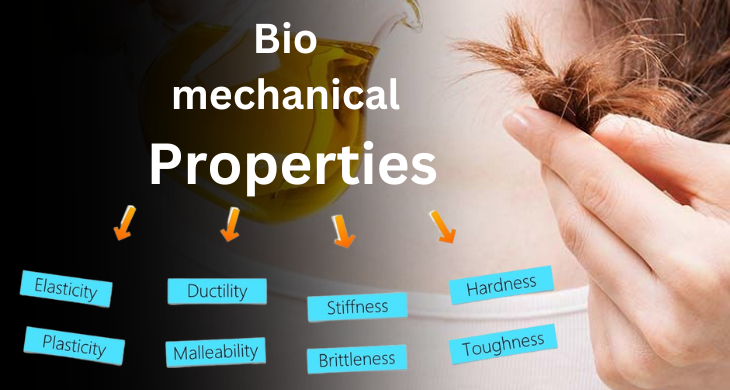Unveiling the Secrets of Hair: Exploring Biomechanical Properties

Introduction:
Beyond its visual appeal, hair possesses fascinating biomechanical properties that contribute to its resilience and behavior. By categorizing hair based on its biomechanical properties, such as tensile strength, elasticity, and flexibility, we can gain valuable insights into how hair responds to external forces and treatments. Join us as we delve into the intriguing realm of hair’s biomechanical secrets.
Exploring Biomechanical Properties of Hair:
Hair’s remarkable biomechanical properties make it capable of withstanding various stresses & strains. Understanding these properties helps us comprehend the mechanical behavior of hair, shedding light on its unique characteristics and responses.
Tensile Strength:
Tensile strength refers to the ability of hair to withstand pulling or stretching forces without breaking. It is determined by the structural integrity of the hair shaft, primarily influenced by its protein composition. Hair with higher tensile strength is less prone to breakage and can withstand greater mechanical stress.
Elasticity:
Elasticity defines hair’s ability to stretch under tension and return to its original shape when the force is released. This property is crucial for maintaining hair’s shape and preventing permanent deformation. Elasticity is influenced by the presence of proteins like elastin and alpha-keratin, which allow hair to stretch and recoil without damage.
Flexibility:
Flexibility refers to hair’s capacity to bend, twist, or flex without breaking. It is determined by the overall structure and integrity of the hair shaft. Flexible hair is less prone to damage and breakage when subjected to bending or twisting forces. Factors such as moisture content and lipid balance also affect hair flexibility.
Understanding Hair’s Response:
Hair’s biomechanical properties play a significant role in its response to external forces & treatments. By categorizing hair based on these properties, we can anticipate how it will react under different circumstances.
Heat and Styling:
Hair with lower tensile strength and reduced elasticity is more vulnerable to damage caused by excessive heat and styling tools. Understanding the biomechanical properties of hair helps us determine the appropriate temperature & styling techniques to minimize the risk of heat-induced damage.
Chemical Treatments:
Hair’s biomechanical properties influence its response to chemical treatments like coloring, perming, or straightening. Hair with higher tensile strength and better flexibility can better withstand the chemical processes involved, while hair with lower strength may be more susceptible to damage.
Environmental Factors:
Biomechanical properties of hair also play a role in its response to environmental factors such as humidity, UV radiation & pollution. Hair with optimal tensile strength and flexibility can better cope with these external stressors, maintaining its integrity and health.
Conclusion:
Categorizing hair based on its biomechanical properties, including tensile strength, elasticity, and flexibility, allows us to unravel the mechanical behavior of this remarkable fiber. Understanding how hair responds to external forces and treatments empowers us to make informed decisions regarding its care and maintenance. By embracing the secrets of hair’s biomechanical properties, we can nurture and protect our locks, ensuring they remain resilient, healthy, and beautiful.
